The Column: The Sacrificial Poet
Suz Szucs writes about how poems and design can get tangled up in the everyday, to everyone's benefit. She describes one night in Duluth this winter.
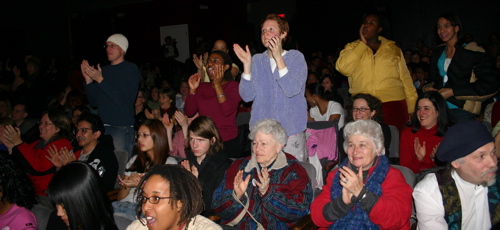
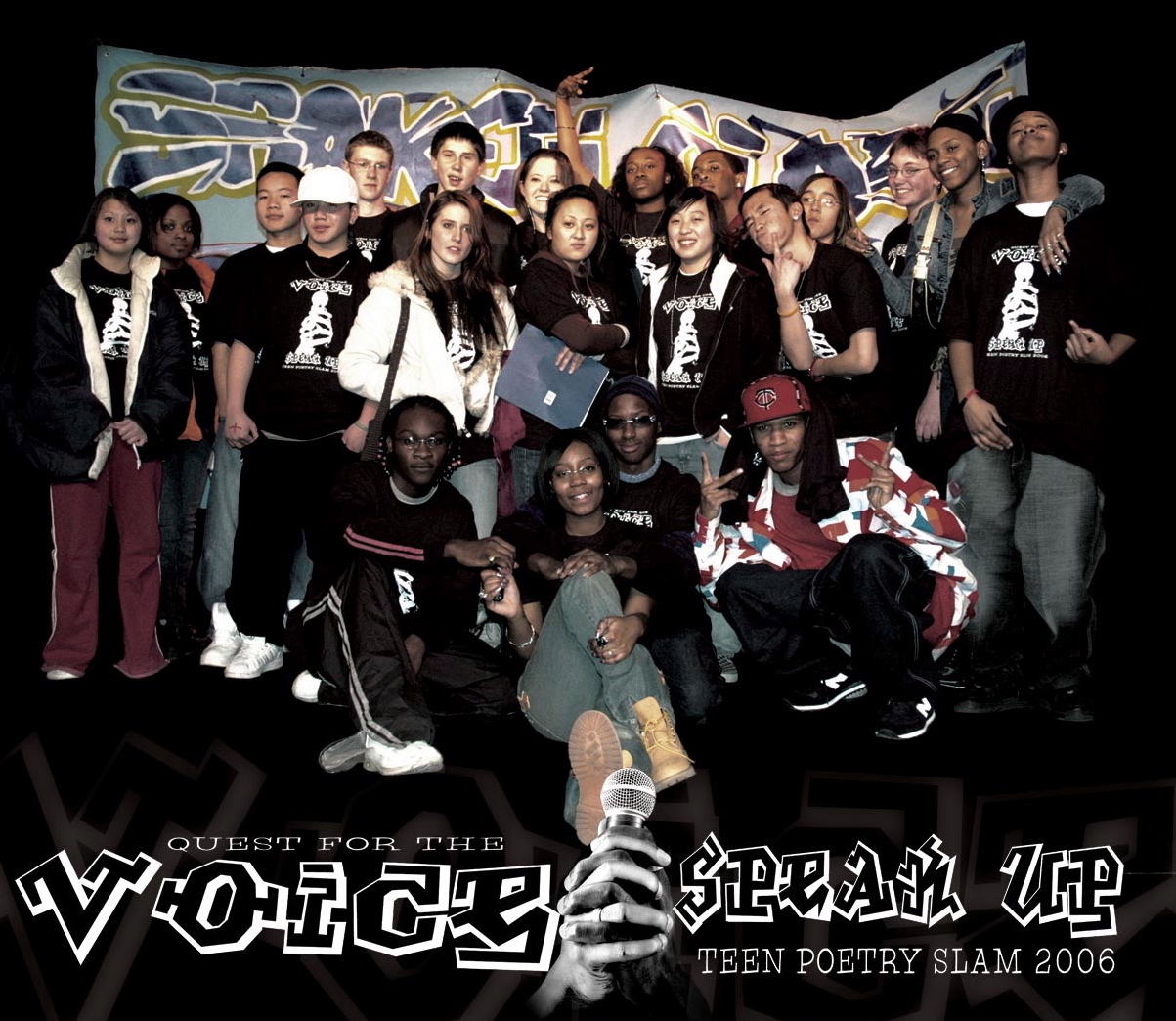
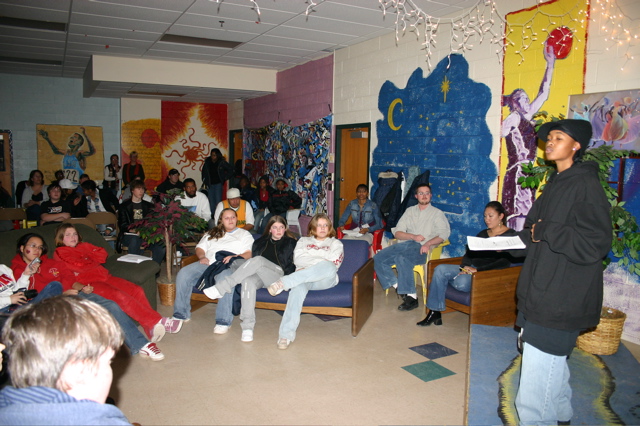

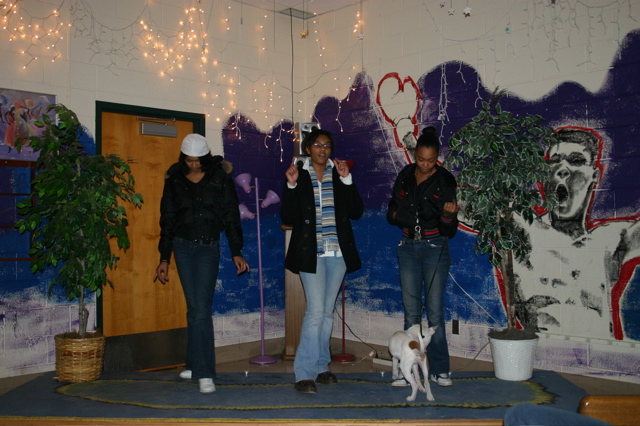
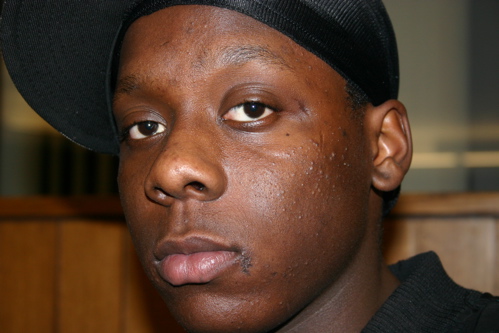
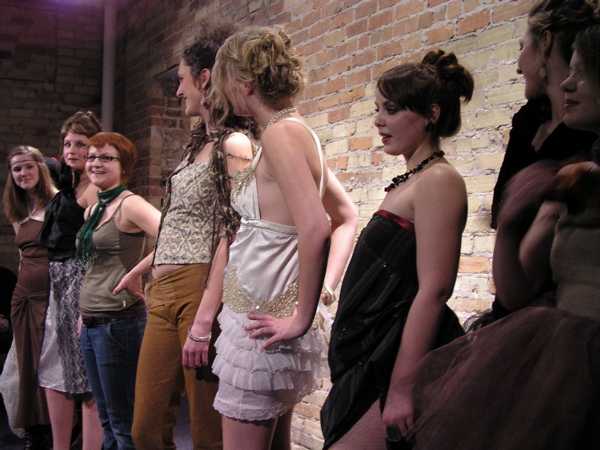
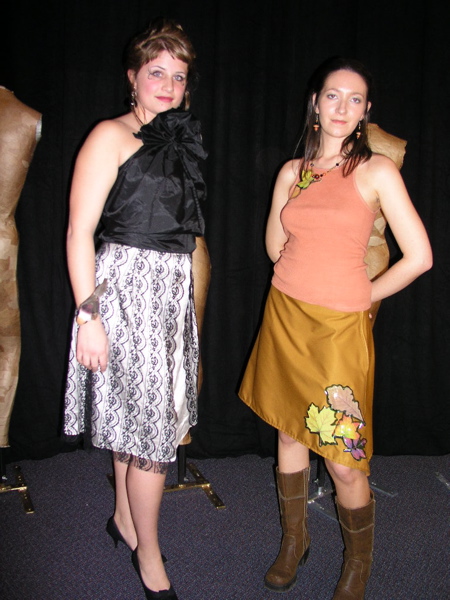
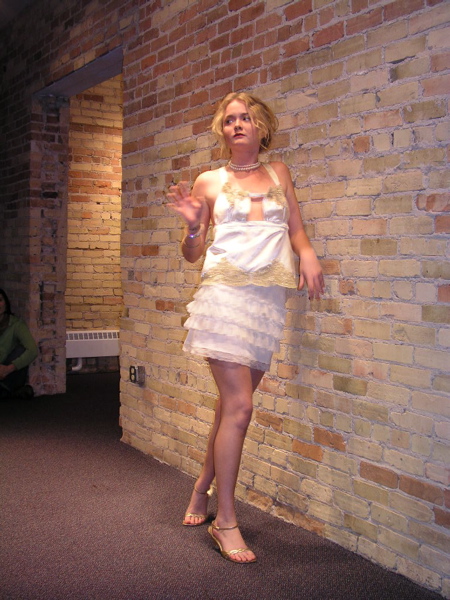
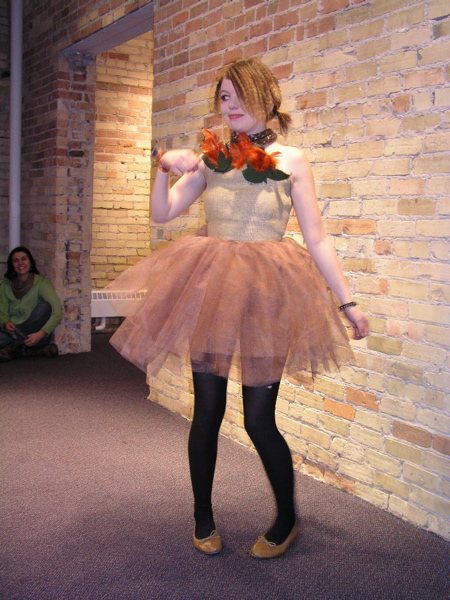
“If you ain’t got no hot sauce, you gonna hurt somebody’s feelin’s” – Sister Naomi
One Friday this winter I found myself at the Washington Studios enjoying double-decker events. Upstairs was an art fashion show, downstairs a spoken-word event for youth. The slam started first, so I piled myself into the little Neighborhood Youth Services room with about the most diverse crowd I have ever been part of in Duluth. The room was overflowing with mixed souls – mixed age, mixed race, mixed background. It was a good mix, dominated by the young folks who knew this party was for them; their excitement was infectious.
Nervousness filled the air as the young competitors bunched up in the back of the room. Judges sat opposite the stage, which was warmly lit with candles and Christmas lights. They seemed official, yet casual, imposing and necessary, but full of expectation. Tish Jones from the Cities stood up and reminded the crowd, “This is a poetry slam for teens, so imagine you’re a fourteen-year-old…. What you gonna give ‘em?” A roar of applause erupted… “I said ‘WHAT you gonna give ‘em!’” The shout of applause that followed, drowning out the first, said we were gonna give approval, just for getting up on that stage and pouring out their souls. The crowd was certainly ready.
Ten years ago, in San Francisco, Youth Speaks, a spoken word center and competition for youth, got started as a way to get kids interested in reading and writing. It turned into a national competition and some energetic souls brought the idea over to the Twin Cities last year. This year, those folks are making an effort to spread the word, so to speak, throughout the state by traveling to regional schools and organizing workshops and spoken word competitions. The finalists in those competitions were then invited to compete at a couple of events in the Twin Cities in February with those finalists heading to New York for the national competition in April. There are enough layers in the process to allow kids to participate at whatever level they desire; to get them working with teachers and mentors and to build friendships across communities. Last year the Twin Cities organization raised $20,000 to get the program up and running and their kids out to the national competition. That they feel a great need to reach out inclusively to the rest of the state is not just impressive, it’s poetic.
Poetry is a state of being. Those who can think in metaphor, who can tap into their feelings and present it to a group of strangers, are giants among us. Like any art, there is a narcissistic aspect to making – it is about yourself, but performing it for others, that’s a gift. It’s saying, “I give you permission to investigate my life… I offer it up to you, take what you need.” Sure, there is a sense of relief in sharing; when responses are good, one gets back what is put out. But first, the artist has to be willing to make herself vulnerable – she gives, she teaches her audience the universality of feeling. That’s what poetry is all about. When it is good, it is a sacrificial offering. The week following the youth slam I was fortunate to hear Dasha Kelly share a poem about dealing with her young son’s death. It was a generous gift and I am a better person, more complete, for the hearing.
The teenage years are the trenches between childhood and adulthood. First of all, your hormones are raging, yes they are. You feel utterly alone in the world, yes you do. No one understands you, and adults certainly don’t understand what you and your friends are going though, no they don’t. Poetry has always recorded pain, suffering, emotion, but you don’t expect such young people to know so much of it. I wish they didn’t. To see such longing, such hardship worn by such young faces is disheartening; to see pain transformed so fully by that same youth is incredibly moving.
These teens described abuse, neglect, racism and the trauma of illness, mostly personal stories, although a few of the poets discussed the Iraq war and general societal ills. Mostly a lot of anger got expressed, but little sentimental love, so the words spoken were base and raw and real. Perhaps this is partly due to the slam format – it’s critical, although not cynical, and there isn’t a whole lot of time for polite words. Yet for all the complaining, there remains hope – present next to that anger was an overwhelming desire to create a better world. The slam itself was a celebration and it was gratifying to be at an event where you could feel the energy of lives being changed – three minutes at a time.
Teens Rock the Mic is the Minneapolis-based outgrowth of Youth Speaks. Organized by Melissa Borgmann, the organization presents workshops aimed at promoting literacy and creativity. Sitting in the audience that night, I got to thinking about how little space our society gives to the voices and the art of young people. We glorify an elite art culture, but who does that touch? Who are the role models for our young people – rap artists, pop divas, movie stars? We worship a cult of youth, but we don’t listen to our young people. On this evening, however, one could see the teens mentoring each other, and adult poets who had come to share bridging that gap. It all was coming together.
Since then I attended the “Spirituality of Compassion” conference at the College of Saint Scholastica. The keynote speaker, Father Joseph Nassal, spoke about reconciliation and forgiveness. He talked about the fallibility of the concept “forgive and forget,” stating that memory is a crucial part of healing. We can forgive, but we should not forget. Speaking the truth is the first step towards healing our wounds, but the scars never leave us and must be acknowledged. Philosopher bell hooks said that we are complicit in our marginalization, even becoming dependant upon our victimization. In healing and defeating their own victimization, the Teens Rock the Mic participants are way ahead of the game.
It was hard to tear myself away from the teen slam to check out the fashion show upstairs. And it was culture shock. Down in that basement, there was a teeming, raucous crowd of poetry lovers, a bubbling mix of races and ages. Upstairs at Laura Kincaid’s fashion show, “Jolie Laide: (anti-) fashion,” the crowd was decidedly white and hip. Pop group Portishead wafted over the speakers and of course the event was not going to start on time. Eventually, however, the amateur models careened past the audience, so fast that the show lasted about five minutes, not much longer than the average slammer downstairs.
Like the poets, Kincaid was expressing her individuality with her fashions. Like haute couture, her fashions were impractical, though they were not frivolous. Her materials were recycled – commenting on the wastefulness of “buy” culture (richly promoted by the fashion industry). Her designs were personal – they reflected Kincaid. It was a small, breathy gesture… each outfit more like a haiku than an epic poem, with just enough elements to convey its story. Perhaps her strength was fine-tuned brevity, although I still think her models could have been better coached in the runway mantra, “pause, turn, pause, turn…”
That these kinds of grass-roots events are happening gives me hope for our future and the vitality of art as a cultural tool. They don’t rely on billboards and museum halls; rather, they are happening right in our neighborhoods and emphasize community. These are the kinds of art functions that are going to make a difference in our every day… truth and reconciliation in words, poetry in crepe and tulle… it’s the small gestures that ultimately change our lives.